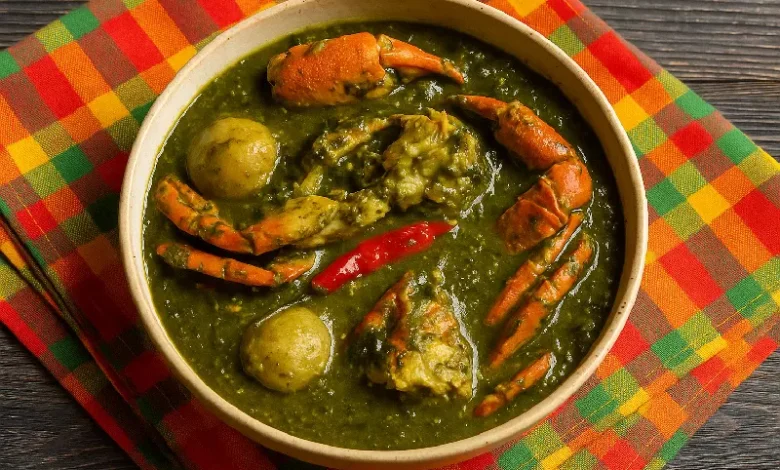National Dish of Dominica

The national dish of Dominica is callaloo soup, a hearty, green-based soup made primarily from Dasheen or Tannia leaves and often incorporating local crab and smoked meats. Officially designated in 2013, it replaced the former national dish, mountain chicken (the endangered Leptodactylus fallax), to better reflect sustainable practices and Dominica’s cultural values. While it is not classified as a formal emblem or national symbol under law like the national flag or coat of arms, callaloo holds symbolic status as a key representation of the nation’s culinary heritage.
Cultural Importance of Callaloo in Dominica
Callaloo soup is a unifying culinary expression deeply embedded in Dominica’s Creole heritage. Its prominence during Independence celebrations, Jounen Kwéyòl, and family gatherings highlights its cultural relevance. Its selection as the national dish reflects a broader recognition of Dominica’s Afro-Caribbean culinary roots and a shift toward honouring traditional, locally-sourced food practices.
Evolution and Modern Recognition
Ecological concerns and cultural evolution drove the decision to replace mountain chicken with callaloo, which became the national dish. As a dish that varies by community but remains rooted in local agriculture and ancestral cooking methods, callaloo soup symbolises adaptability, sustainability, and national pride. Today, it is prepared in homes, restaurants, and cultural showcases across the island and represents Dominica in regional food festivals and international tourism promotions.
Representation and Symbolism
While not a statutory national symbol, callaloo is widely treated as one in the social and cultural landscape. It appears in educational programs, tourism brochures, and culinary exhibitions, often used to communicate Dominica’s identity to citizens and visitors. Its use of native ingredients and its communal method of preparation contribute to its role as a gastronomic emblem of the nation.




